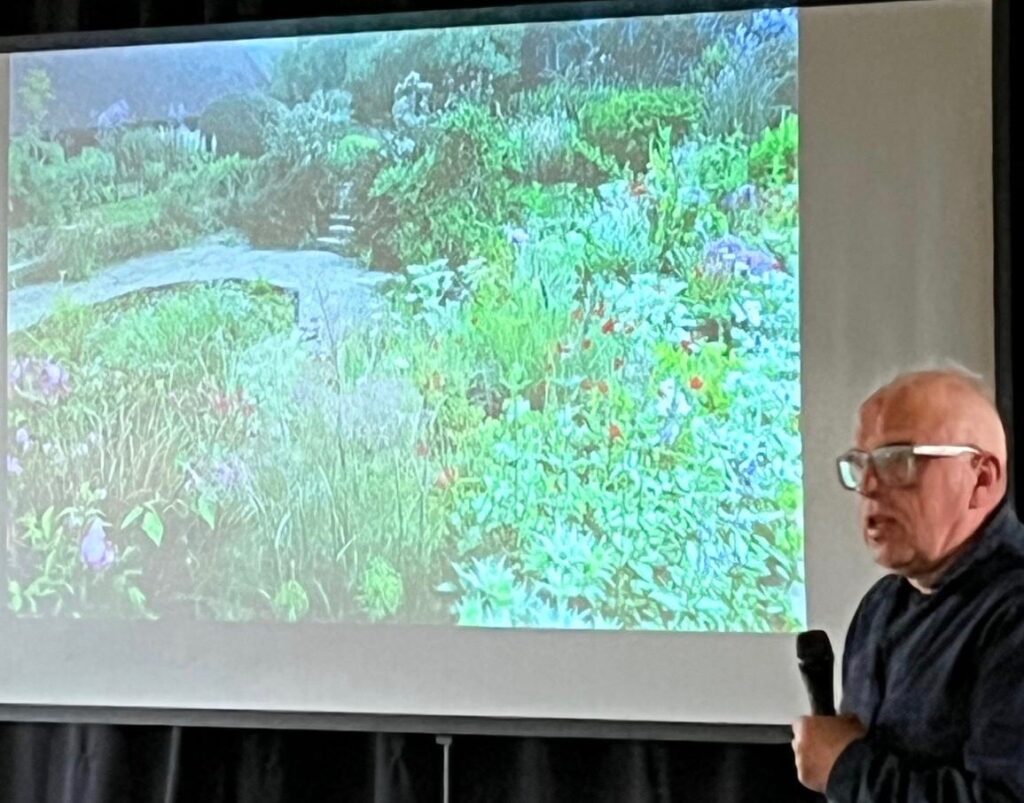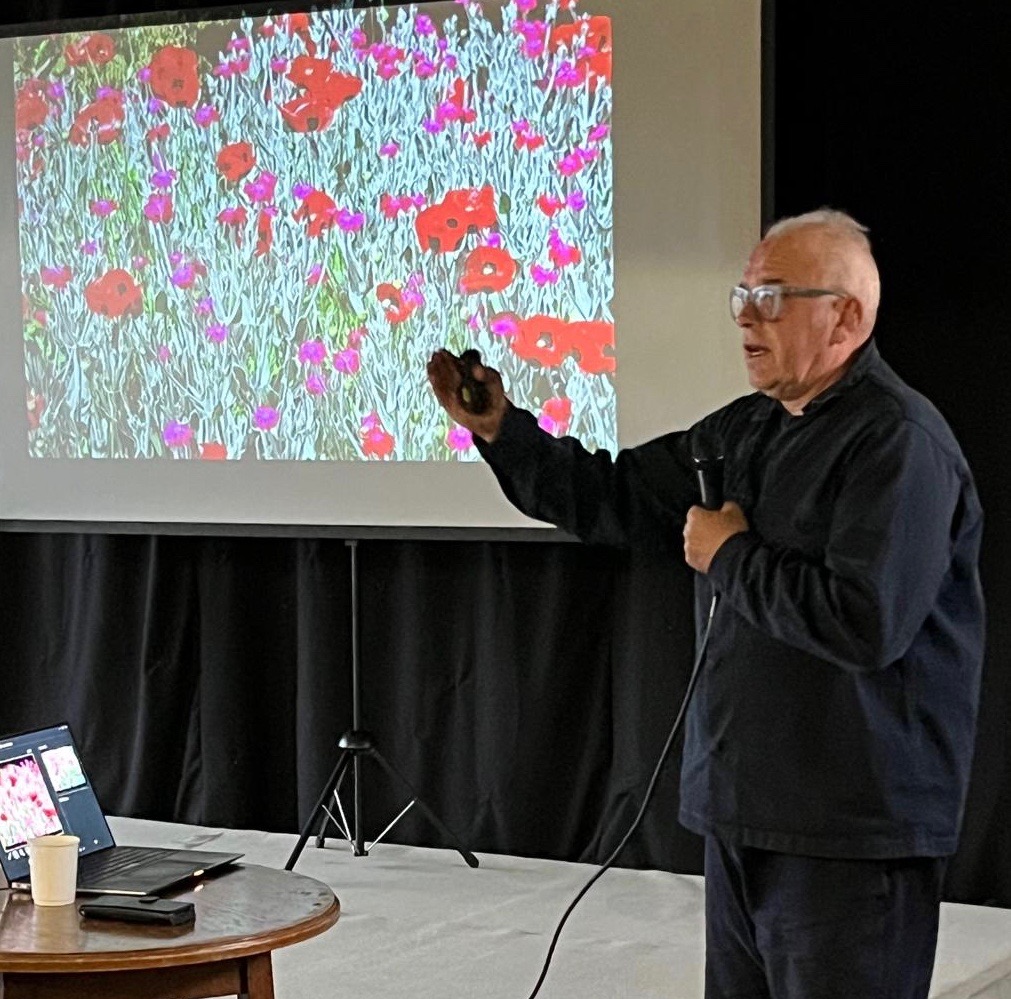
It was a privilege to welcome back to the April meeting of Aldersbrook Horticultural Society, Fergus Garrett, the Head Gardener at Great Dixter and Chief Executive of The Great Dixter Trust. Fergus is one of the most influential garden designers and horticultural educators in Britain today, he lectures internationally, is an adviser to RHS Wisley, and has received both the RHS Veitch Memorial Medal and the RHS Victoria Medal of Honour for outstanding contribution to the practice of horticulture. He began his talk by telling us about the House at Great Dixter, redesigned and enlarged by Lutyens for the parents of Christopher Lloyd. He spoke about Christopher Lloyd, at work in the garden at Great Dixter from childhood to his death aged 85; he developed the garden into an internationally known garden where new ideas were developed, becoming a hub of horticultural learning. He was the writer of 25 books and columnist for The Guardian and The Observer for many years.



When Christopher Lloyd died in 2006, Fergus Garrett became Head Gardener and Chief Executive of the Trust that was established. In 2006 the gardeners at Great Dixter stopped using pesticides, used only organic fertiliser, bedded out fewer plants and watered less. Self sown, natural plants thrived like Cow Parsley and Foxgloves and the 3 acres of formal gardens looked more natural. The 35 acres of woodland were managed more effectively by cutting down trees and using the wood for hurdles etc, and in the grassland mosaic planting was introduced encouraging, in both areas, a wider variety of planting to encourage a greater range of wildlife. As a very old garden, Great Dixter has a rich seed bed and is deliberately planted with a long season of layered planting. The planting in the old walls and stone areas provide habitats, as do log piles and green roofs. After working with a number of wildlife groups starting with the British Arachnological Society which Fergus encouraged to come to the garden by offering them a venue for their annual conference once they were there they visited the garden, discovered 77 different species of spider in the compost bins and a species of spider that was last recorded in Sussex in the 1920s. Fergus got money form the Heritage Lottery Fund and commissioned a biodiversity audit led by Andy Phillips who discovered one of the richest sites for biodiversity he’s surveyed in 30 years and also discovered that the greatest range of biodiversity was actually in the 3 acre formal garden not in the surrounding meadows as they had expected. The results of their biodiversity audit is well documented and through their training programmes, the range of students who learn and work at Great Dixter and Fergus and his team’s energy and enthusiasm more and more gardeners are gardening naturally to encourage biodiversity in their own gardens.
On the 14th June, members of Aldersbrook Horticultural Society will be visiting Great Dixter, and we have been invited to stay later, after the gates have closed, to enjoy the garden in all its glory.
